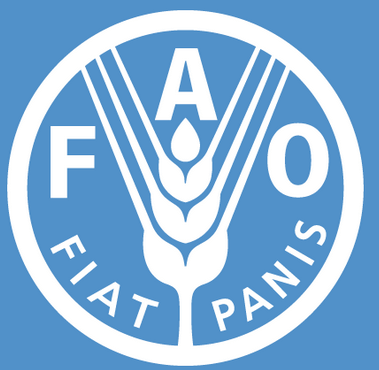Pollutants from agriculture a serious threat to world’s water – FAO
 Water pollution from unsustainable agricultural practices poses a serious risk to human health and the planet’s ecosystems, a problem often underestimated by policymakers and farmers alike, cautions a new report.
Water pollution from unsustainable agricultural practices poses a serious risk to human health and the planet’s ecosystems, a problem often underestimated by policymakers and farmers alike, cautions a new report.
In many countries the biggest source of water pollution today is agriculture — not cities or industry — while worldwide, the most common chemical contaminant found in groundwater aquifers is nitrate from farming.
This was made known in ”More People, More Food, Worse Water? A Global Review of Water Pollution from Agriculture’, report launched by the Food and Agriculture Organisation (FAO) and the International Water Management Institute at a conference in Tajikistan.
The report, which was made available to the Ghana News Agency by Mr George Kourous of the FAO Media Relations in Rome, said modern agriculture is responsible for the discharge of large quantities of agrochemicals, organic matter, sediments and saline trading into water bodies.
It said this pollution affects billions of people and generates annual costs exceeding billions of dollars.
“Agriculture is the single largest producer of wastewater, by volume, and livestock generates far more excreta than do humans. As land use has intensified, countries have greatly increased the use of synthetic pesticides, fertilizers and other inputs,” wrote Mr Eduardo Mansur, Director of FAO’s Land and Water Division, and Ms Claudia Sadoff, IWMI Director-General, in their introduction to the report.
“While these inputs have helped boost food production, they have also given rise to environmental threats, as well as to potential human health concerns,” they add.
The report said agro-pollutants of greatest concern for human health were pathogens from livestock, pesticides, nitrates in groundwater, trace metallic elements and emerging pollutants, including antibiotics and antibiotic-resistant genes excreted by livestock.
The new report represents the most comprehensive review of the dispersed scientific literature on the issue complied to date, and aims to fill information gaps and lay out policy and farm-level solutions in one consolidated reference.
It said the boom in global agricultural productivity that followed the Second World War was achieved in large part through the intensive use of inputs such as pesticides and chemical fertilizers.
The report said since 1960 the use of mineral fertilizer had grown 10 times, while since 1970 global sales of pesticides climbed from around one billion dollars to $35 billion a year.
It said meanwhile, the intensification of livestock production — world livestock numbers have more than tripled since 1970 — had seen a new class of pollutants emerge: antibiotics, vaccines and hormonal growth promoters that travel from farms through water into ecosystems and drinking water.
The report said at the same time, water pollution by organic matter from livestock farming was now significantly more widespread than organic pollution from urban areas.
It said another booming sector, aquaculture (which had expanded 20-fold since 1980) was now releasing ever greater amounts of fish excreta, uneaten feed, antibiotics, fungicides and anti-fouling agents into surface waters.
On what could be done, according to ‘More People, More Food, Worse Water’, water pollution from agriculture was a complex challenge and effectively managing it requires a range of responses.
It said the most effective way to mitigate pressure on aquatic ecosystems and rural ecologies was to limit the export of pollutants at the source or to intercept them before they reach vulnerable ecosystems.
It said once off-farm, the costs of remediation progressively increase.
“One way to do this is to develop policies and incentives that encourage people to adopt more sustainable diets and limit increases in demand for food with a large environmental footprint — for example taxes and subsidies,” it said.
It noted that at the consumer level, reducing food waste could help.
One study covered in the report estimated that nitrogen pollution from food waste adds up to 6.3 teragrams per year.
According to the report, “traditional” regulatory instruments would also continue to be a key tool in reducing farm outputs of pollutants.
It said these include water quality standards; pollution discharge permits; mandatory best practices; environmental impact assessments for certain farming activities; buffer zones around farms; restrictions on agricultural practices or the location of farms; and limits on the marketing and sale of dangerous products.
However, the report acknowledges that well-known principles for reducing pollution, such as ‘polluter pays,’ are hard to apply to non-point agricultural pollution because identifying the actual polluters is neither easy nor cheap.
That means that measures that promote farmer “buy in” are critical to preening pollution at the source — such as tax breaks for the adoption of practices that minimize farm export of nutrients and pesticides or payments to for “landscape maintenance.”
Source: GNA
